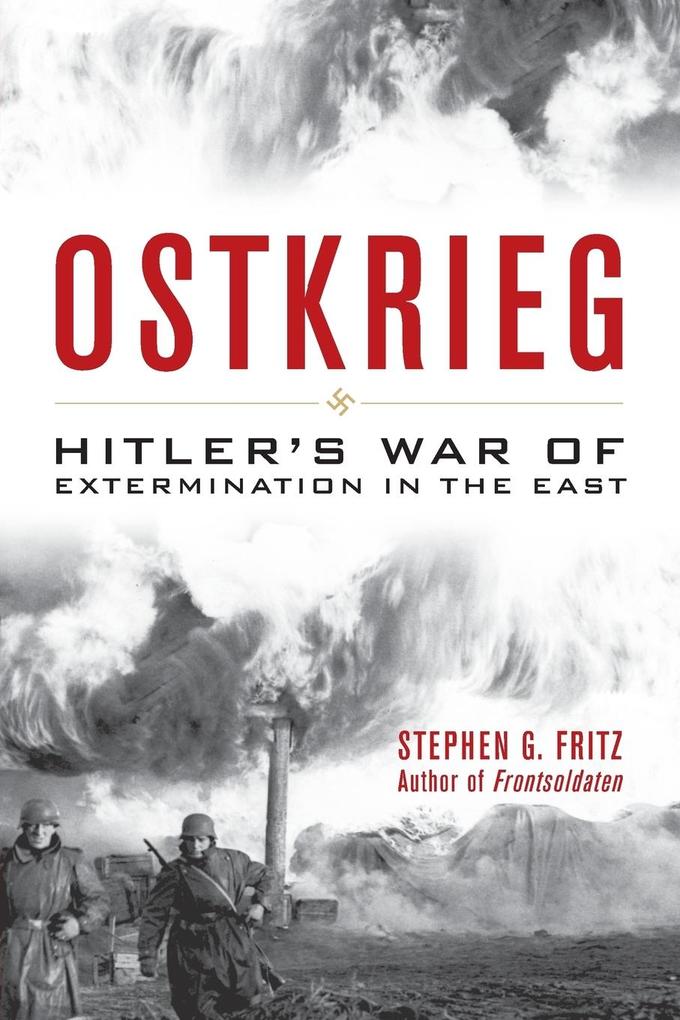
Zustellung: Do, 26.06. - Di, 01.07.
Versand in 2 Wochen
VersandkostenfreiBestellen & in Filiale abholen:
On June 22, 1941, Germany launched the greatest land assault in history on the Soviet Union, an attack that Adolf Hitler deemed crucial to ensure German economic and political survival. As the key theater of the war for the Germans, the eastern front consumed enormous levels of resources and accounted for 75 percent of all German casualties. Despite the significance of this campaign to Germany and to the war as a whole, few English-language publications of the last thirty-five years have addressed these pivotal events.
In Ostkrieg: Hitler's War of Extermination in the East, Stephen G. Fritz bridges the gap in scholarship by incorporating historical research from the last several decades into an accessible, comprehensive, and coherent narrative. His analysis of the Russo-German War from a German perspective covers all aspects of the eastern front, demonstrating the interrelation of military events, economic policy, resource exploitation, and racial policy that first motivated the invasion. This in-depth account challenges accepted notions about World War II and promotes greater understanding of a topic that has been neglected by historians.
In Ostkrieg: Hitler's War of Extermination in the East, Stephen G. Fritz bridges the gap in scholarship by incorporating historical research from the last several decades into an accessible, comprehensive, and coherent narrative. His analysis of the Russo-German War from a German perspective covers all aspects of the eastern front, demonstrating the interrelation of military events, economic policy, resource exploitation, and racial policy that first motivated the invasion. This in-depth account challenges accepted notions about World War II and promotes greater understanding of a topic that has been neglected by historians.
Inhaltsverzeichnis
Maps vii Abbreviations and Foreign Terms xv Preface xix
1. Dilemma 1
2. Decision 31
3. Onslaught 77
4. Whirlwind 135
5. Reckoning 199
6. All or Nothing 241
7. Total War 303
8. Scorched Earth 359
9. Disintegration 405
10. Death Throes 439 Conclusion 473 Acknowledgments 489 Appendix: Supplementary Data 491 Notes 499 Bibliography 555 Index 609 Photographs follow page 234
1. Dilemma 1
2. Decision 31
3. Onslaught 77
4. Whirlwind 135
5. Reckoning 199
6. All or Nothing 241
7. Total War 303
8. Scorched Earth 359
9. Disintegration 405
10. Death Throes 439 Conclusion 473 Acknowledgments 489 Appendix: Supplementary Data 491 Notes 499 Bibliography 555 Index 609 Photographs follow page 234
Produktdetails
Erscheinungsdatum
05. Februar 2015
Sprache
englisch
Seitenanzahl
688
Autor/Autorin
Stephen G Fritz
Verlag/Hersteller
Produktart
kartoniert
Gewicht
980 g
Größe (L/B/H)
233/154/48 mm
ISBN
9780813161198
Entdecken Sie mehr
Bewertungen
0 Bewertungen
Es wurden noch keine Bewertungen abgegeben. Schreiben Sie die erste Bewertung zu "Ostkrieg" und helfen Sie damit anderen bei der Kaufentscheidung.









